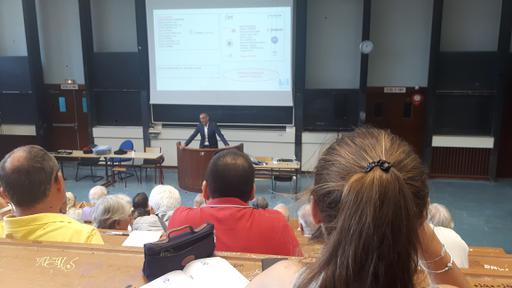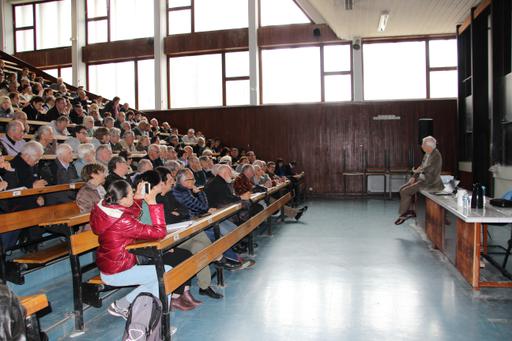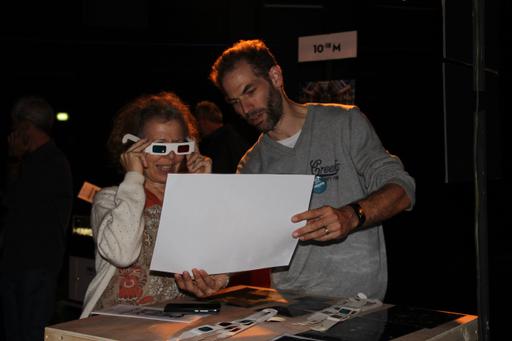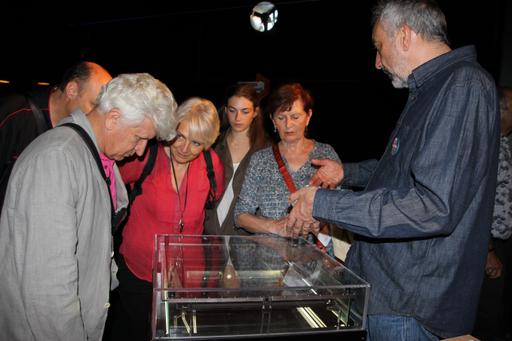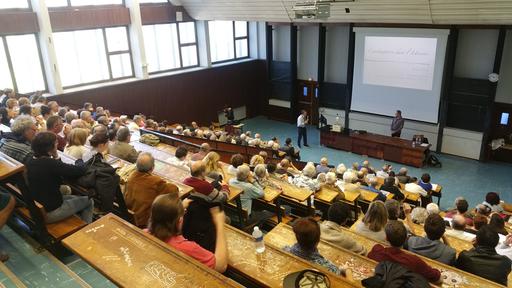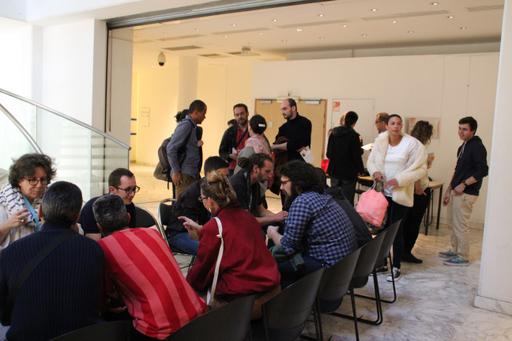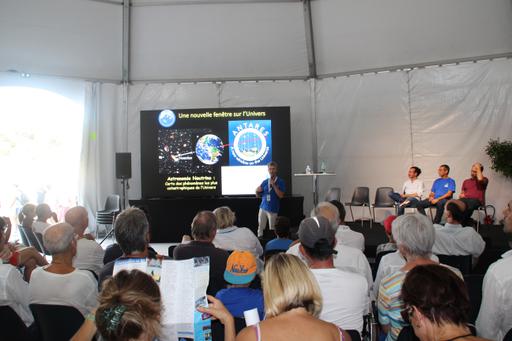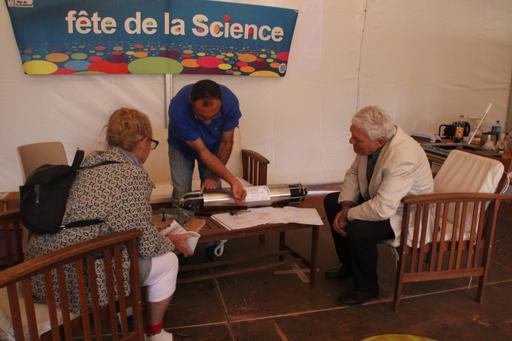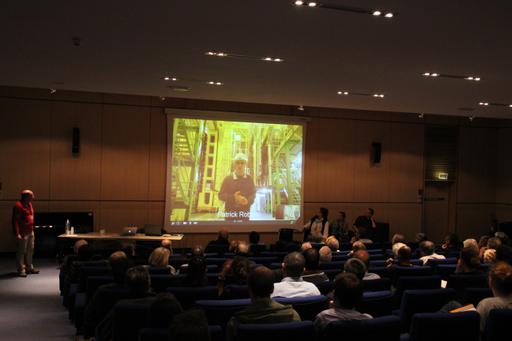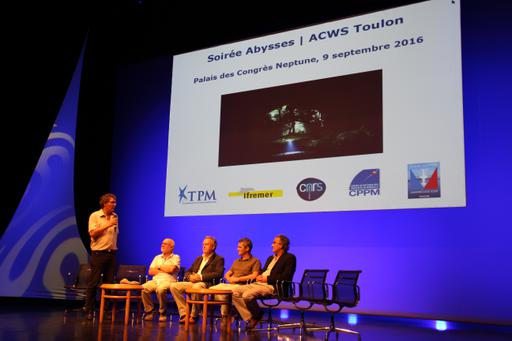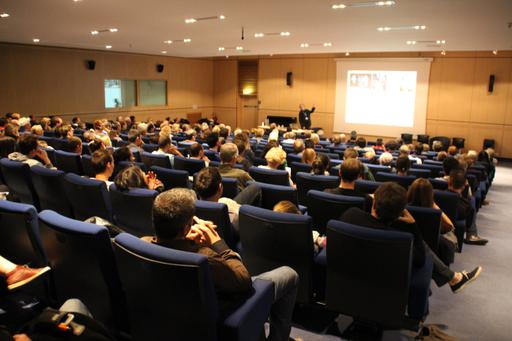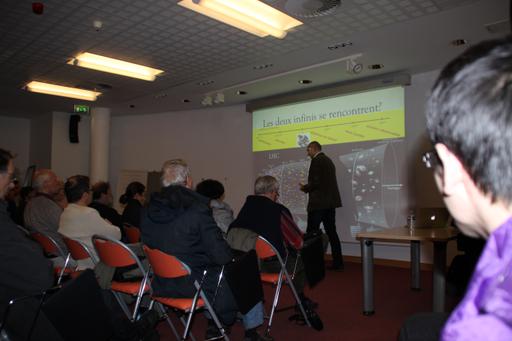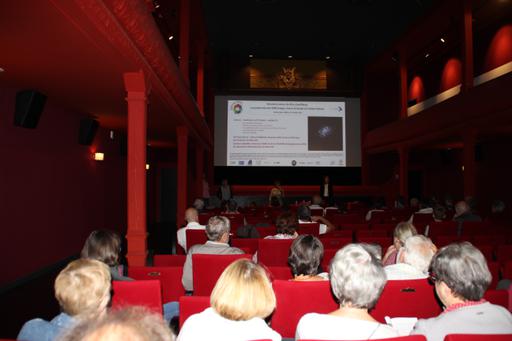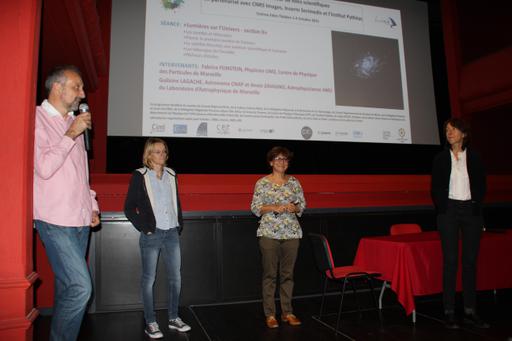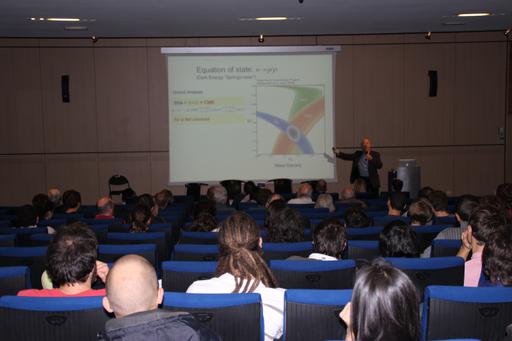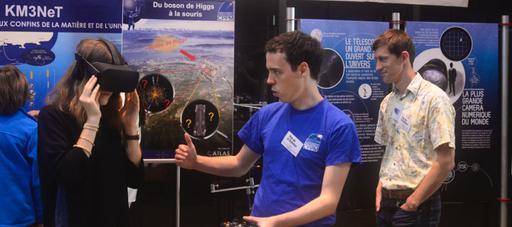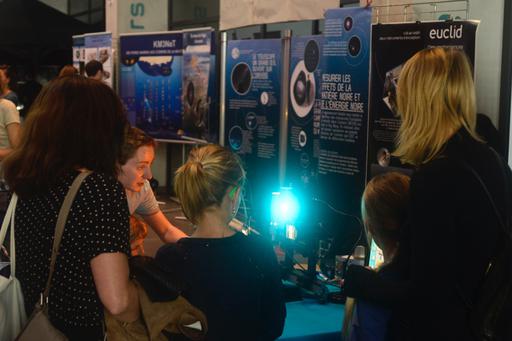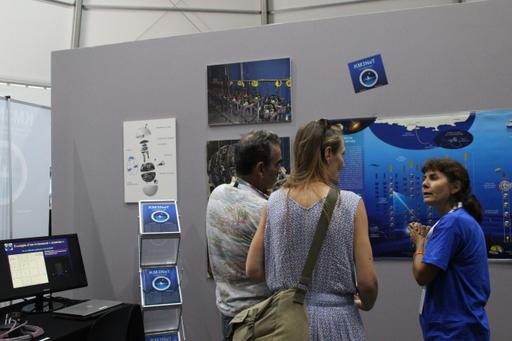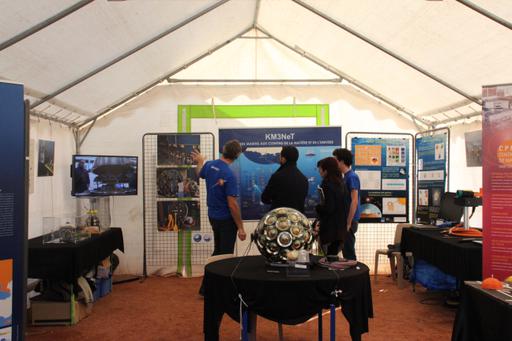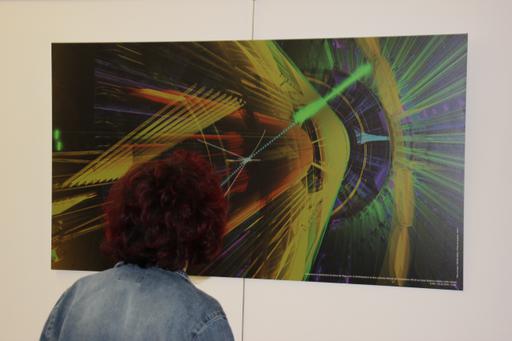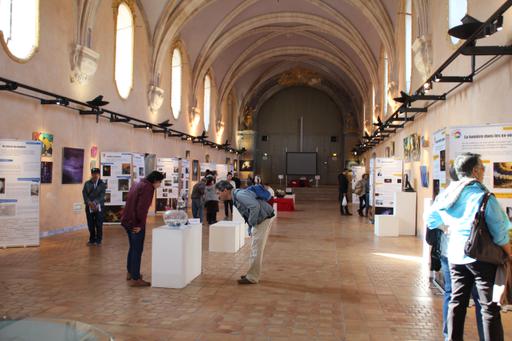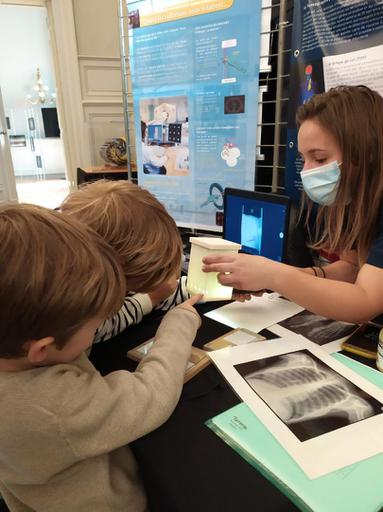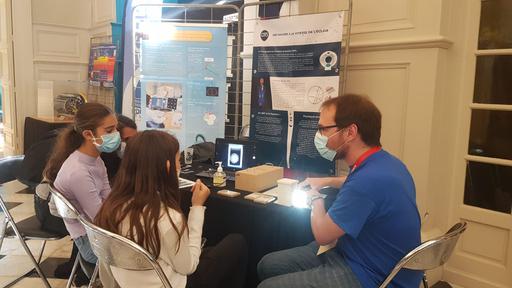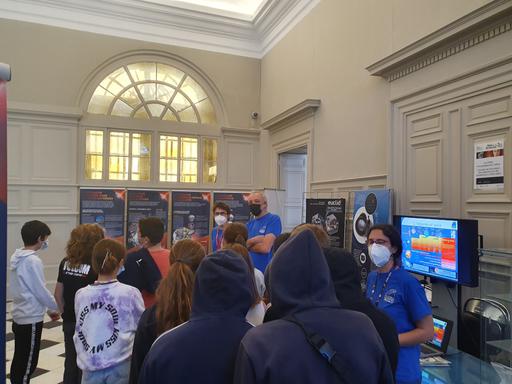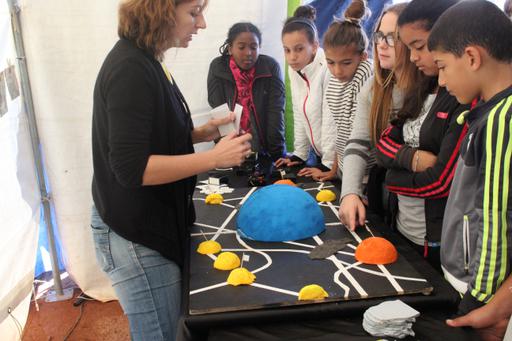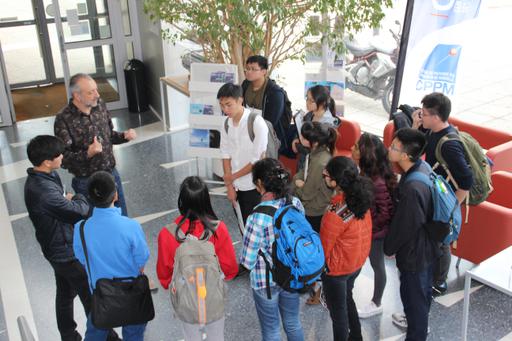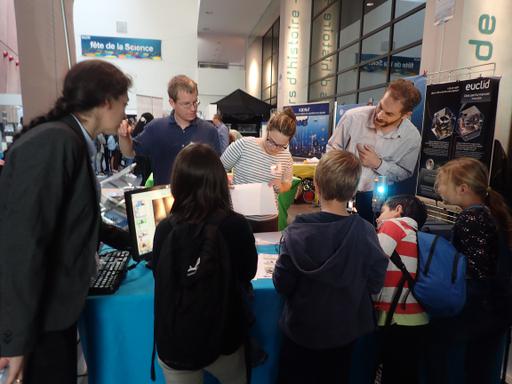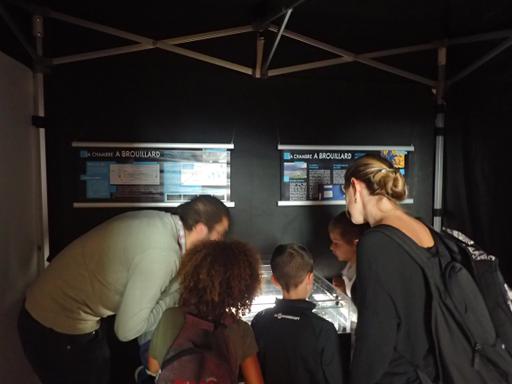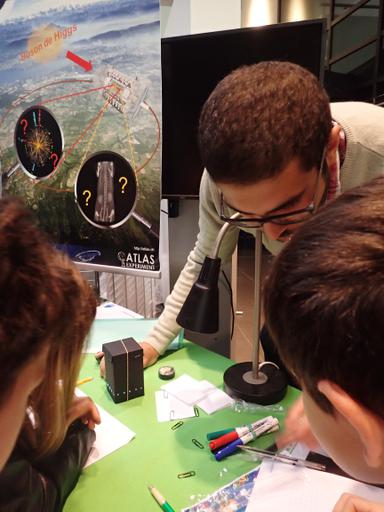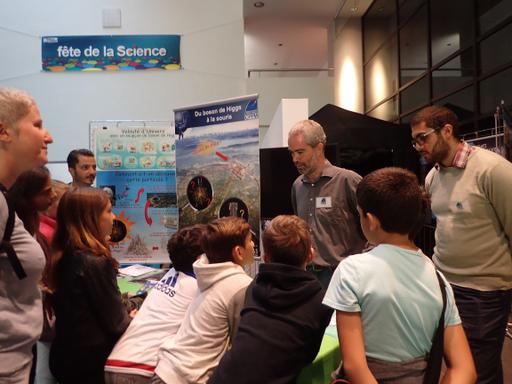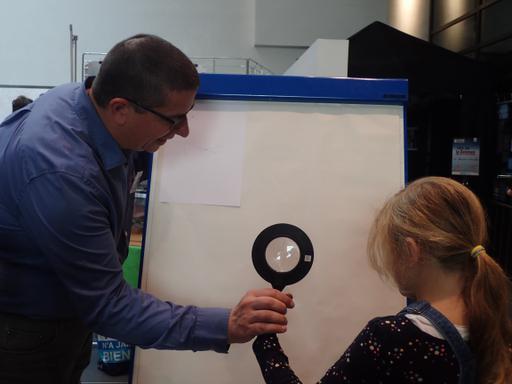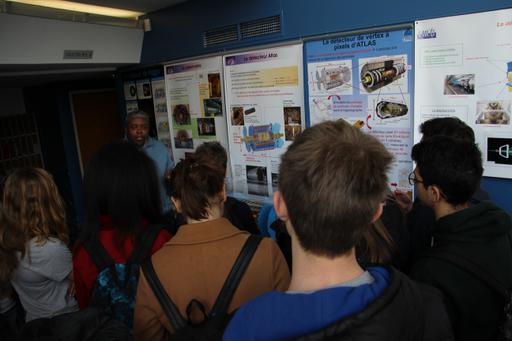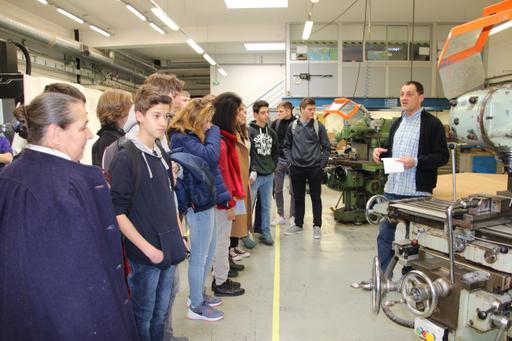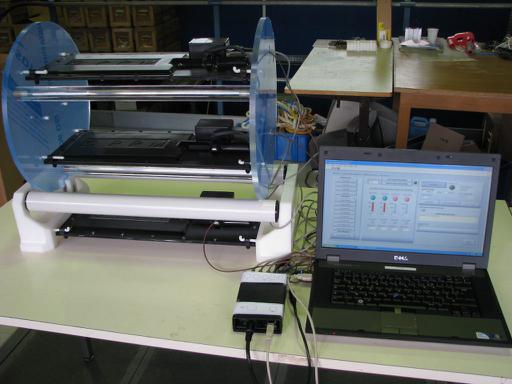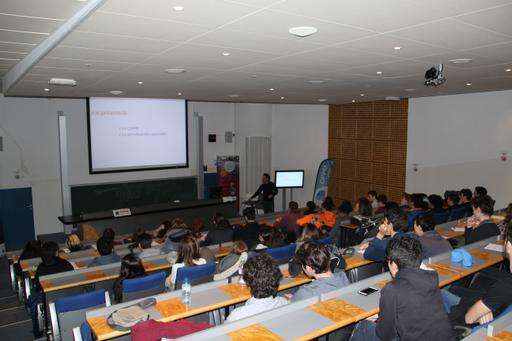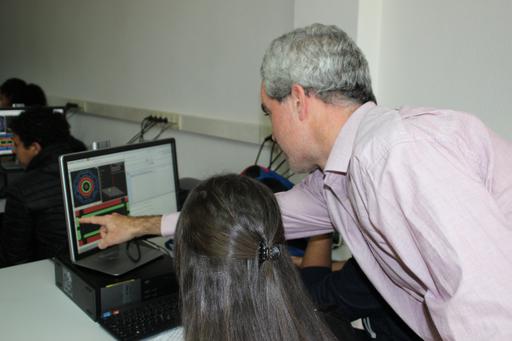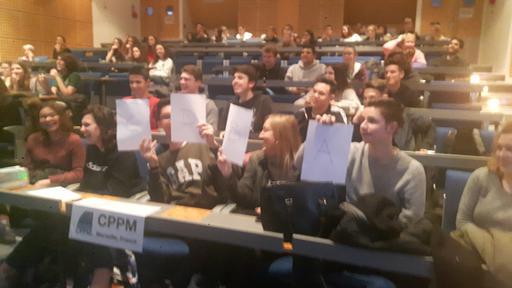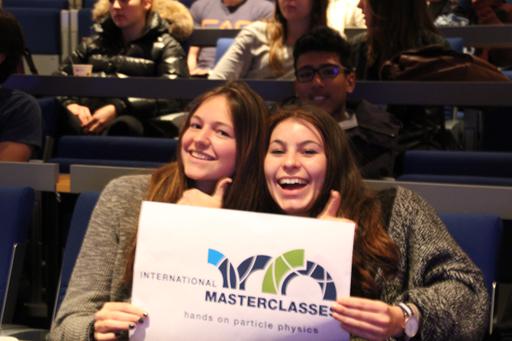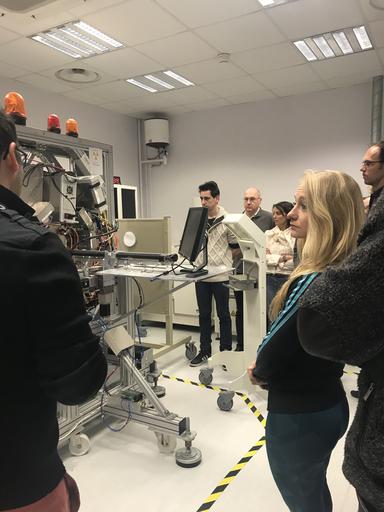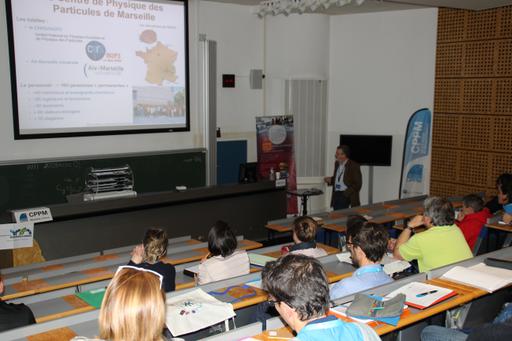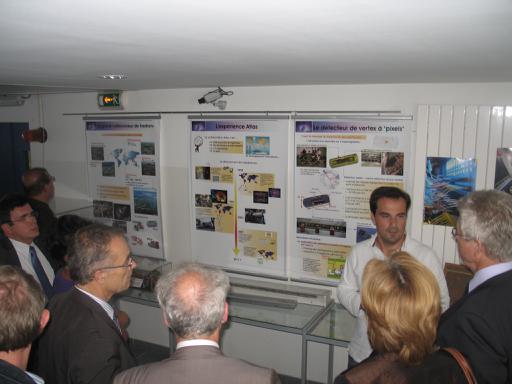Knowledge sharing
In the changing research environment, communication has become a major strategic issue. Today more than ever, scientific communication occupies a crucial place and the promotion of the laboratory to all audiences is essential.
By sharing its knowledge, CPPM is at the heart of major societal debates: answering the scientific questions of our time and anticipating future technological breakthroughs.
Specific tools and actions aimed at a varied public are implemented by our teams through collaborations with the communication and scientific and technical culture departments, of our supervisors and partners (institutional and scientific).
See also:
- Scientific outreach and communication initiatives by CNRS Nuclei & Particles
- Scientific culture initiatives by Aix-Marseille University
Contact: Magali Damoiseaux
General public
We introduce the general public to scientific and technical advances in research through exhibitions, conferences, and events, both at the CPPM and outside the laboratory.
Among our achievements are: the exhibition “From the Abyss to the Cosmos” (2023), a series of monthly conferences Mysteries at the Heart of the Universe and Matter (since 2005), as well as our participation in major events such as the Fête de la science and Treize minutes Marseille.
Our exhibitions incorporate interactive devices such as the Cosmophone and the fog chamber, and we develop art and science projects to spark curiosity and bring research closer to the public, such as 95%, la Danse des infinis.
In 2025, as part of the EPS-HEP international conference, we organized the Infinity Festival Physics & Outreach, a cultural and scientific program designed to share the adventure of contemporary physics with everyone.
For more information:
- Infinity Festival Physics & Outreach
- 95%, la Danse des Infinis
- "Des abysses au cosmos" exhibition
- Series of monthly conferences
- Fête de la science
- Treize minutes Marseille
- Cosmophone
Contact : Magali Damoiseaux
Meetings
Exhibitions
Students
We encourage high school students, both boys and girls, to pursue scientific fields by introducing them to research careers and initiating them into the scientific process. The CPPM also participates in numerous educational activities through teaching materials and scientific workshops. We also offer internships to high school and college students.
Contact : Magali Damoiseaux
Scientific dissemination is carried out using “traditional” methods, but also through more innovative means that use art as a vehicle for mediation. Three illustrative examples:
Dance, song, music & the physics of the two infinities
95%, la Danse des Infinis is a unique cultural project that seeks to interest the general public and younger generations in scientific research and the big questions about how the universe works. Through a lively performance, it highlights the importance of individual contributions to the collective effort in science and aims to bring the scientific world and the performing arts closer together.
Cinema & particles
In partnership with the Polly Maggoo association, the Cinésciences workshops bring science and cinema together for all audiences, especially young people. These workshops help develop curiosity, critical thinking, and creativity through image analysis, writing, and short video production, in collaboration with scientists and filmmakers.
Between Two Infinities (10'50)
Theater & Neutrinos
Together with visual artist Laurent Mulot and the Éolie Songe theater company, researchers from the ANTARES-KM3NeT project are participating in the creation of Aganta Kairos, an original work combining art and science. This theatrical adaptation introduces audiences to neutrino physics and the KM3NeT project, bringing together researchers, artists, and audiences of all ages. Teaser Archipel Aganta Kairos
These projects receive institutional support from DRARI, CNRS, amU, Région Sud, and the Provence-Alpes-Côte d'Azur academic region.
Teachers
We propose to teachers to intervene in their high schools, to visit our laboratory and to carry out scientific culture operations with them. CPPM, thanks to the initiative of CNRS Nuclei & Particles (Institute of Nuclear and Particle Physics, IN2P3), on which we depend, offers secondary school teachers the "School of the Two Infinite" scheme. It allows them to introduce the scientific field into their teaching. It also offers internships at CERN and documentary resources, such as the book "Passport for the Two Infinite". CPPM has also designed a cosmo-detector - it quantifies the flux of cosmic rays at different angles of incidence - deployed throughout the country, available to all schools. This has been possible thanks to the ministerial initiative "Science at School".
For more information:
Scientific meetings teachers - researchers
Contact : Magali Damoiseaux
